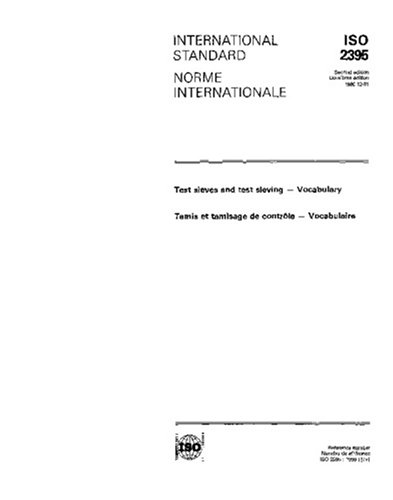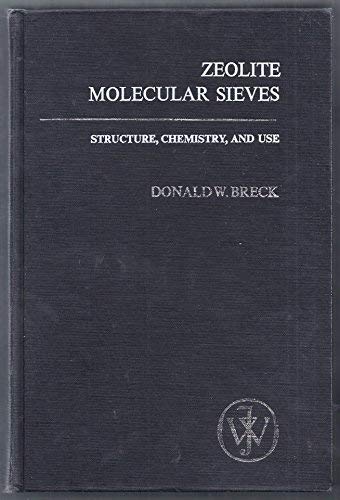




Sieving is a method used to separate particles of different sizes through the use of a sieve, which is a device with holes in it. This process is commonly used in various industries and scientific experiments to divide materials into different size fractions.
When sieving, the material to be separated is placed on top of the sieve and shaken or stirred. The particles smaller than the size of the holes in the sieve pass through, while the larger particles remain on top.
This process is based on the principle of particle size distribution. By separating the particles based on size, sieving allows for the analysis and classification of materials, such as determining the amount of fine or coarse particles present.
Sieving is a widely used technique in many fields, including construction, mining, agriculture, food processing, and environmental science. It is also commonly used in laboratories for research purposes to determine the size distribution of various substances.
Overall, sieving is a simple yet effective method for separating particles based on their size. It has numerous applications in different industries and scientific disciplines, making it an essential process for analyzing and classifying materials.
Understanding the Sieving Process
The sieving process is an essential technique used in various industries and scientific applications to separate particles of different sizes. It is a method that involves the use of a sieve or screen, which is a perforated surface with uniform and specific-sized holes. By passing a mixture of particles through the sieve, the sieving process allows for the separation of the particles based on their size.
Process and Mechanism
The sieving process works by placing the mixture of particles onto the sieve and shaking or vibrating it. As the mixture passes through the sieve, the smaller particles are able to fall through the holes, while the larger particles remain on top. The size of the holes determines the range of particle sizes that can be separated.
During the sieving process, it is important to consider factors such as the amplitude and frequency of vibration, as well as the duration of sieving. These parameters can affect the efficiency of particle separation and the accuracy of the results.
Applications
The sieving process has a wide range of applications across various industries. In the pharmaceutical industry, sieving is used to separate oversized or undersized particles from medications, ensuring consistency in dosage. In the food industry, sieving helps in removing foreign particles or impurities from ingredients. It is also used in the mining industry to separate valuable minerals from waste material.
Scientific research and laboratory settings also rely on sieving for particle analysis and quality control. Particle size distribution plays a crucial role in the behavior and properties of many materials, and precise separation through sieving is vital.
In summary, the sieving process is a valuable technique that allows for the separation of particles based on their size. With its wide range of applications and importance in various industries, understanding the sieving process is vital for ensuring the quality and efficiency of many materials and products.
The Basics of Sieving
Sieving is a fundamental technique used to separate particles according to their size. It is widely used in various industries such as food processing, mining, construction, and pharmaceuticals. The process involves passing a mixture of particles through a sieve, which is a device with a mesh or perforated surface. The particles smaller than the openings in the sieve pass through it, while the larger particles are retained on the sieve.
How does sieving work?
Sieving works based on the principle of size exclusion. The sieve acts as a physical barrier that allows only particles below a certain size to pass through. When a mixture of particles is poured onto the sieve, the smaller particles fall through the openings, while the larger particles are unable to pass through and remain on top of the sieve.
The size of the openings in the sieve determines the size of particles that can pass through. Sieves with smaller openings are used to separate finer particles, while sieves with larger openings are used for coarser particles.
Types of sieves
There are various types of sieves available, each designed for specific applications:
- Mesh sieves: These sieves have a woven mesh fabric as the sieve surface, allowing particles to pass through the gaps between the woven wires.
- Perforated plate sieves: These sieves have a solid metal plate with evenly spaced holes as the sieve surface, allowing particles to pass through the holes.
- Wire mesh sieves: These sieves have a grid of fine wires woven together to form the sieve surface. They are commonly used for finer particles.
- Rotary sieves: These sieves are motor-driven and rotate, allowing continuous sieving of large quantities of material.
Each type of sieve has its advantages and limitations, making them suitable for specific applications.
Sieving is a versatile and efficient technique that plays a crucial role in various industries. It allows for the separation of particles based on size, ensuring consistent product quality and enabling further processing of the desired particle size fractions.
The Importance of Sieving in Various Industries
Sieving is a crucial process that plays a vital role in many industries. It involves using a mesh or screen to separate particles based on their size, ensuring that only particles of a specific size pass through while larger or smaller particles are retained. This technique is widely used in various sectors, including pharmaceuticals, food processing, mining, and construction. The importance of sieving in these industries cannot be overstated as it enables the production of high-quality products and ensures the safety and efficiency of the manufacturing process.
Pharmaceutical Industry
In the pharmaceutical industry, sieving is used to separate and classify different types of particles, such as powders, granules, and capsules. This process is crucial for quality control, as it helps to remove any impurities or oversized particles that could affect the medication’s effectiveness or stability. Sieving also ensures uniformity in the particle size distribution, which is essential for consistent dosing and proper dissolution of the drugs.
Food Processing Industry
Sieving plays a vital role in the food processing industry to ensure that the final products meet the required standards of quality and safety. It is used to remove foreign objects, such as stones, glass, or metal fragments, from the food ingredients before processing. Sieving also helps to separate different-sized particles, such as grains, flours, or spices, to achieve the desired texture and consistency. This process is essential for maintaining the quality, taste, and appearance of food products.
Mining Industry
In the mining industry, sieving is used to separate valuable minerals from the ore particles. The process involves passing the crushed ore through a series of sieves with different mesh sizes. This helps in the separation of minerals based on their size and ensures the extraction of valuable materials while discarding the unwanted waste. Sieving is a critical step in ore processing and plays a significant role in determining the overall efficiency and profitability of mining operations.
Sieving is also extensively used in the construction industry for grading and classifying granular materials, such as aggregates, sands, and gravels. It helps to remove oversize or undersize particles, achieving the desired particle size distribution for various construction applications. By sieving different materials, builders can ensure the strength, stability, and durability of structures, ultimately enhancing the overall quality of construction projects.
In conclusion, sieving is an essential process employed in various industries to ensure product quality, safety, and efficiency. It helps in separating particles based on their size, removing impurities, and achieving the desired particle size distribution. From pharmaceuticals to food processing, mining to construction, sieving plays a crucial role in multiple industrial sectors, contributing to the production of high-quality materials and products.
Factors that Affect Sieving Efficiency
Sieving is a process used to separate particles based on their size using a sieve or a mesh. The efficiency of sieving can be influenced by various factors. Understanding these factors is crucial for achieving accurate and reliable results in sieving applications.
1. Particle Characteristics
The size, shape, and density of particles can greatly affect sieving efficiency. Smaller particles are more likely to pass through the sieve openings, while larger particles tend to be retained. Irregularly shaped particles may have difficulty passing through the sieve openings compared to spherical particles of the same size. High-density particles may settle during the sieving process, leading to inaccurate results.
2. Sieve Characteristics
The design and condition of the sieve itself can impact sieving efficiency. The mesh size, shape, and material of the sieve play a critical role. A sieve with smaller openings can provide higher resolution but may also result in slower sieving rates. The condition of the sieve, such as mesh integrity and cleanliness, can affect the flow of particles through the sieve and impact the accuracy of the results.
3. Sieving Parameters
The parameters set during the sieving process can significantly affect efficiency. These parameters include the amplitude and frequency of vibration, the duration of sieving, and the sample size. The appropriate combination of these parameters should be determined based on the characteristics of the particles and the desired sieving efficiency. Insufficient or excessive vibration can lead to inadequate separation or particle degradation, while improper sample size may result in uneven distribution and inaccurate results.
4. Environmental Conditions
The environmental conditions in which sieving takes place can also impact efficiency. Factors such as temperature, humidity, and airflow can affect the behavior of particles during sieving. For example, high humidity can cause particles to adhere to the sieve openings, reducing the sieving efficiency. Controlling and maintaining consistent environmental conditions can help ensure reliable and reproducible sieving results.
In conclusion, sieving efficiency can be influenced by various factors, including particle characteristics, sieve characteristics, sieving parameters, and environmental conditions. Understanding and carefully controlling these factors are essential for obtaining accurate and consistent results in sieving applications.
| Factors | Impact on Sieving Efficiency |
|---|---|
| Particle Characteristics | Size, shape, and density can affect passage through sieve openings. |
| Sieve Characteristics | Mesh size, shape, and condition of the sieve can impact sieving rates and accuracy. |
| Sieving Parameters | Vibration, duration, and sample size should be optimized for desired sieving efficiency. |
| Environmental Conditions | Temperature, humidity, and airflow can affect particle behavior during sieving. |
Common Applications of Sieving
Sieving is a versatile technique that is used in various industries for a wide range of applications. Some common applications of sieving include:
- Particle size analysis: Sieving is commonly used to determine the particle size distribution of a sample. This is important in many industries, such as pharmaceuticals, food processing, and construction, where the desired particle size can greatly affect the quality and performance of the final product.
- Quality control: Sieving can be used as a quality control measure to ensure that the size and shape of particles meet the specified requirements. It is often used in the manufacturing of powders, granules, and aggregates.
- Separation of impurities: Sieving is an effective method for separating impurities from a sample based on their size. It is commonly used in industries such as mining, recycling, and wastewater treatment to separate valuable materials from waste.
- Classification: Sieving can be used to classify particles based on their size into different fractions or grades. This is important in industries such as agriculture, where grains and seeds need to be sorted based on their size for planting or processing.
- Homogenization: Sieving can be used to mix and homogenize particles of different sizes. This is useful in industries such as pharmaceuticals and cosmetics, where uniformity is important for the effectiveness and stability of the final product.
Overall, sieving plays a crucial role in many industries by providing a reliable and efficient method for particle size analysis, quality control, separation, classification, and homogenization. Its versatility and simplicity make it a widely used technique for various applications.









